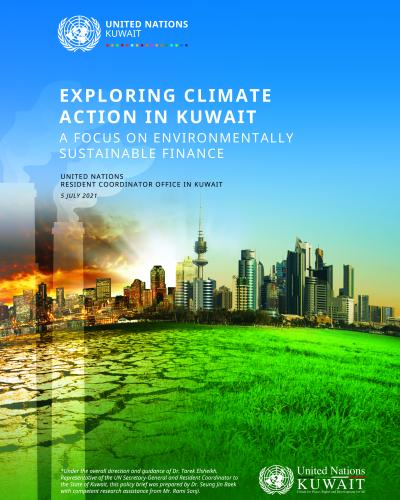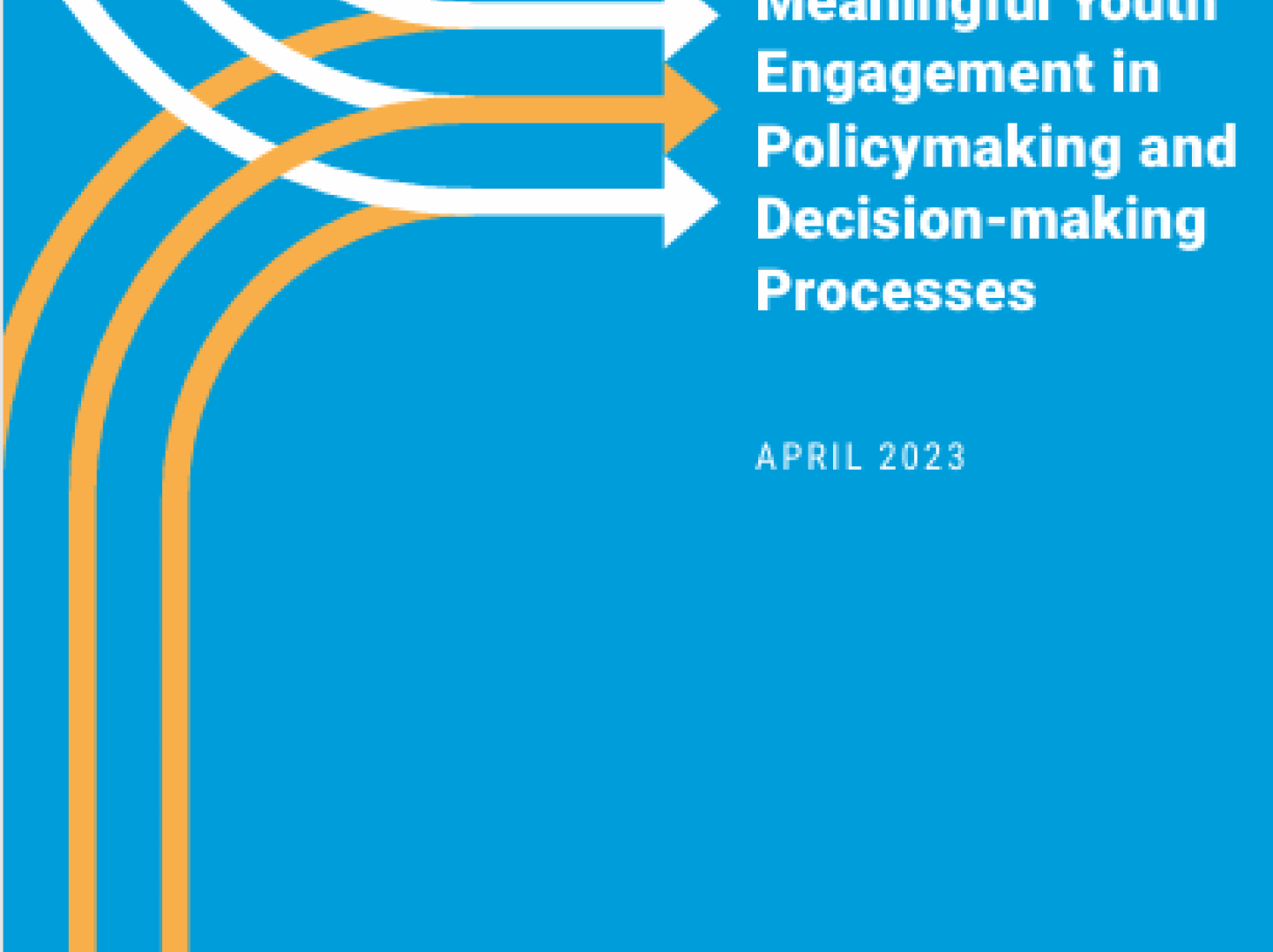Policy Brief on Climate Action with Focus on Environmentally Sustainable Finance

Over the past few decades, it has been a widely accepted phenomenon that industrialization in Kuwait has been realized largely based on a fossil fuel-driven production method. It does, however, contradict the contemporary global normative force of low-carbon growth. In effect, fossil fuel accounts for over 90 per cent of the domestic energy consumed in the country. As such, the trend of per capita GDP in Kuwait has inevitably been associated with the dynamics of CO2 emissions. Besides, such growth pattern has been characterized by the inefficient use of available energy resources, further causing a greater carbon footprint combined with growing energy needs from population growth and rising living standards. This growth pattern without a proactive policy
for the country’s long-term climate resilience raises doubt about the sustainability of future growth
trajectory in this regard.
Kuwait is currently confronted with a series of climate challenges – the country is known for its harsh climate, hot weather and frequent sandstorms, all of which pose serious health threats to its citizens and are further associated with unfavorable dynamics in socio-economic activities. The marine ecosystem is particularly at risk largely due to climate change affecting increased temperatures of sea surface waters. Such a climate trend especially puts a burden on the fisheries sector, the second largest after oil-related industries. Furthermore, the country’s soil is considered inadequate for farming, attributed to the relatively small amount of rainfall. Partly as a consequence, Kuwait is restrained by the amount of land available for farming and the number of crops which further put the country’s food security at serious risk. In the meanwhile, fresh water is a scarce resource, owing to Kuwait’s geographical features, including the absence of rivers and the small amount of precipitation. Coupled with such restrains, the increasing population and its associated water demand remain additional burdens. As a result, Kuwait has both one of the highest per capita energy consumptions in the world and one of the highest waste generation rates, collectively resulting in severe air pollution.
In response to those stylized climate challenges, the Government of Kuwait has made significant efforts by designing and implementing several environment quality-enhancing projects and programs. For the electricity sustainability initiative, the country invests in energy efficient desalination plants, while projects on solar and wind energy parks are also underway, thereby targeting to increase the share of renewable energy in the electricity mix. Furthermore, the country has scaled up its efforts in improving data infrastructure to be used for environmental research that could further better inform decisions on environment policies. Meanwhile, wastewater treatment plants are being built for industrial use, which could further be used for the irrigation of green spaces that are being built in the fight for climate conservation. In terms of promoting behavioral change, the government attempts to strengthen awareness raising initiatives, collaborating with various non-governmental organizations to increase the sustainable/efficient use of water resources; individual-level recycling and changing its waste management practices to environmentally responsible ones are also emphasized in the form of awareness
campaigns.
Notwithstanding such tremendous nationwide efforts, there still exists several policy gaps. These can be categorized into: (i) the still-high level of energy consumption and air pollution; (ii) a relative lack of modern technologies employed in the sectors of seawater desalination, wastewater treatment and waste management facilities in an integrated manner; (iii) a weaker understanding (uncompetitive knowledge base) of the complexity
between climate change and socio-economic dimensions; and (iv) a lack of proactive measures against climate
change, engaged by the private sector in terms of finance and investment. Although the first gap can be associated
somewhat with macro-level industrial strategies, the other three gaps could be addressed in a more effective manner
by embracing a focus on sustainable finance practices. It is mainly because doing so could strengthen private sector
engagement and any form of capital (both human and financial) would thus contribute to environmentally-friendlier
processes, particularly on the technology front. While being engaged in sustainable finance practices, the
continuous efforts on promoting a culture of recycling and responsibility especially at the individual and community
level would be required to maximize the likely impact on society as a whole.













